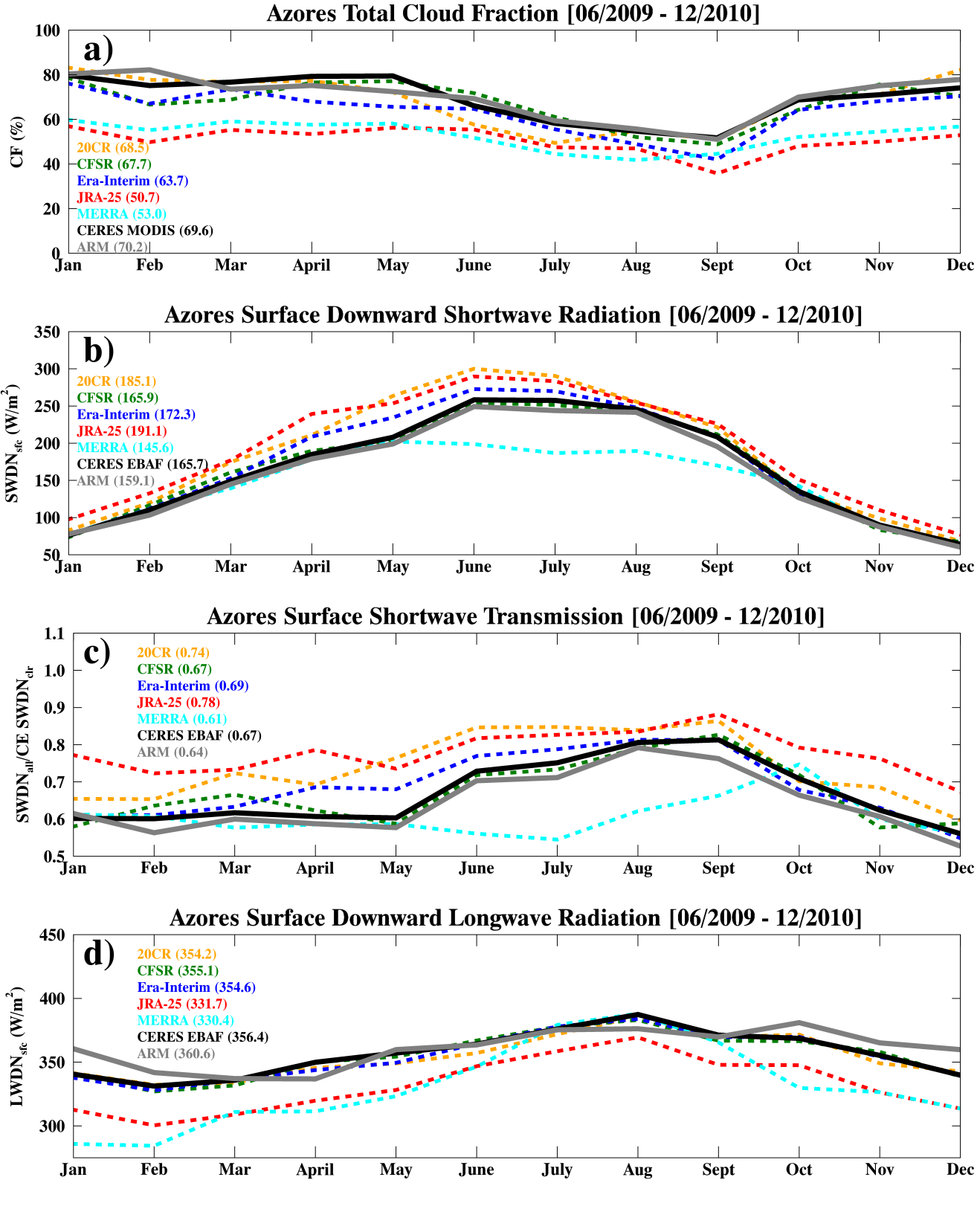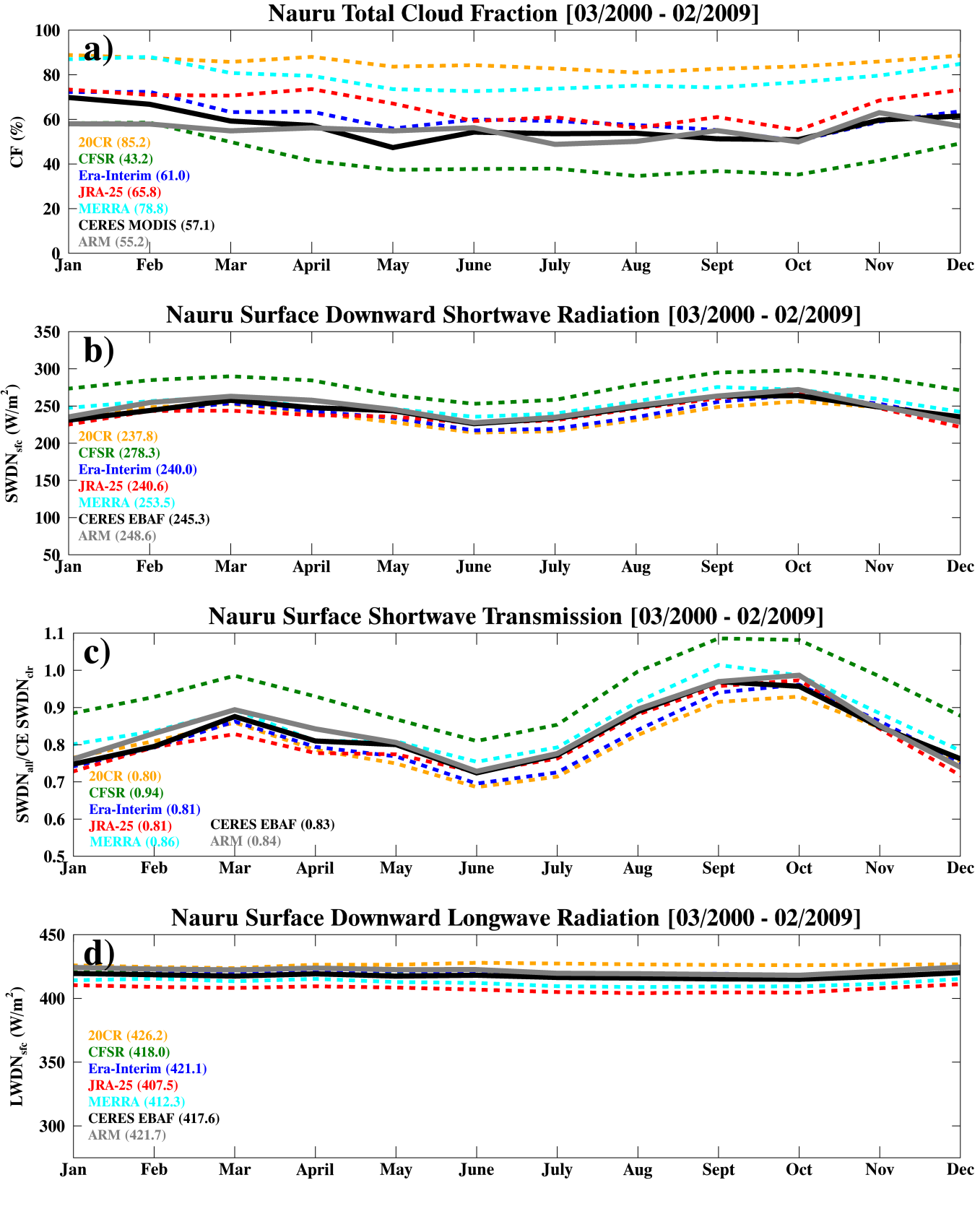ARM data used to evaluate reanalysis results
Submitter:
Dong, Xiquan — University of Arizona
Area of research:
Radiation Processes
Journal Reference:
Science
Atmospheric reanalysis data sets have been used for a variety of applications, such as providing forcing data for single-column and cloud resolving models (Xie et al. 2004; Kennedy et al. 2011), investigating extreme weather and climatic events (Dong et al. 2011 and 2014), and examining forecast skill. These reanalysis data sets also provide an essential tool for performing studies in data-sparse regions where observations are often difficult to obtain (Dong et al. 2014, Zib et al. 2012). While reanalyses offer a resource for investigating climate processes and predictability, and extreme events, the uncertainties in the reanalyzed variables must first be addressed (Rienecker et al. 2011a). It is well known that the accuracy of a reanalysis product is critical for diagnosing past weather and climate events. To have a reliable application of reanalyzed cloud, precipitation, and radiation fluxes in the study of climate change, it is important to have a reasonable estimate of the errors and accuracies of these reanalyzed variables.
Impact
To provide an independent data source to validate the reanalyzed cloud fractions (CFs) and their surface radiation fluxes, the ground-based observations at two ARM sites (Azores and Nauru) have been collected and processed for this study. The observed and reanalyzed clouds and surface radiation budgets are investigated at two ground-based sites with two different climatological regimes (Figures 1 and 2). The clouds that reside in these regimes generally form by different processes and therefore have unique effects on the surface radiation budgets. At the Azores, annual CFs are ~15 % higher than at the Nauru site (70.2 % vs. 55.2 %), less shortwave (SW) radiation (~20%) is transmitted the surface, and less longwave (LW) radiation (~60 W/m2) is emitted back to the surface. Also, the seasonal variations in both CF and radiation are much smaller at the Nauru site than at the Azores site.
Summary
The dichotomy between the atmospheric ascent and descent regimes is a good measure for determining which parameterization scheme requires more improvement (convective vs. marine boundary layer clouds) in these five reanalyses.



